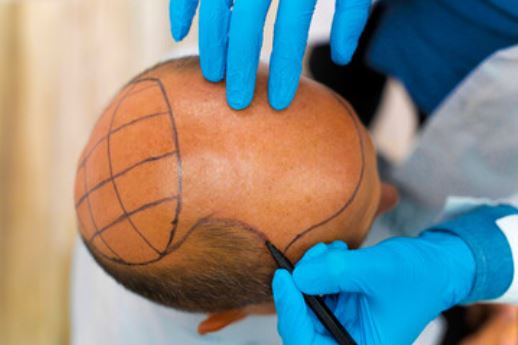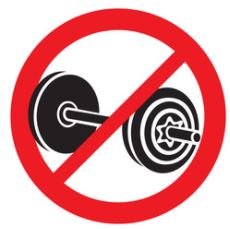Dr. Manas S.N.Talks About Hair Transplant Cost, Procedure and Aftercare
Hair transplants are becoming increasingly fashionable and widespread. Many people struggle with thinning hair for a variety of reasons. It can affect someone’s self-esteem, whether it’s caused by aging or other underlying issues. Certain people perform hair transplants for cosmetic reasons.
There are some successful therapies for hair loss, but nothing beats hair transplants for speed and effectiveness. The treatment can be painless and simple with today’s technology. On the other hand, the importance of aftercare cannot be overstated. Many hair transplant surgeons will provide you with post-operative advice, which you should carefully observe.
For more information on hair transplants, read the article below, which contains insights offered by Dr.Manas S.N., an experienced hair transplant surgeon,who is known to provide hair transplants in Mysore at affordable rates. He discusses the procedure and hair transplant cost in Mysore, and also discusses the aftercare instructions to be followed to make hair transplantation a success and reach the destination of confidence and self-esteem.
First, let us discuss the procedure and cost of hair transplant in Mysore.
Contents
Procedure and Cost of Hair Transplant in Mysore

The most popular hair restoration treatments sought are follicular unit extraction (FUE) and follicular unit transplantation (FUT). These treatments entail harvesting healthy individual hair follicles from the donor region of the scalp (which has dense hair development) and transplanting them to bald patches or pattern baldness locations (recipient area).
Dr. Manas S.N. will pierce minute incisions into the scalp for natural-looking results and implant the follicular grafts with great precision and care. The grafted skin strip may have a linear scar; however, this will be hidden when additional hair grows naturally surrounding the location.
At Reniu Clinic, FUE hair transplant costs Rs.30-Rs.35 per hair graft. The clinic also specializes in performing other hair transplant procedures such as Bio-FUE hair transplant, Direct hair transplant and Reniu Advanced Hair Transplant. The cost of Bio-FUE hair transplant procedure is Rs.35-Rs.40 per hair graft whereas the cost of Direct hair transplant is Rs.55-Rs.60 per hair graft. Reniu Advanced Hair Transplant costs Rs.50-Rs.55 per hair graft.
Dr. Manas S.N. the experienced hair transplant surgeon says that the cost of hair transplant depends on the extent of baldness, hair transplant procedure, number of grafts, donor area and other factors. Whereas the benefits of hair transplant depends on the post-operative care. Yes, to reap the maximum benefits from the hair transplant procedure, it is essential to follow the aftercare instructions given by the hair transplant doctor properly.
What are the aftercare instructions for hair transplants?
After you’ve had your hair transplant surgery, you’ll need to take care of yourself. Taking hair from the same scalp and transferring it to another location is one thing. However, because it is still surgery, there will be some side effects, even if it is minimally invasive. It can take two to three months for new hair follicles to accept and grow new hair after the transplant fully.
The new hair growth may be patchy at first, but it will eventually fill in. Most patients see their desired results in ten to twelve months, though this might vary depending on the volume of hair transplanted and the patient. According to Dr. Manas S.N., you can only get a complete head of newly grown hair if you’re willing to put in the effort for the aftercare.
Do not wash your hair right away.
Let your hair air dry for a few days before washing it. Don’t be alarmed if a few hair strands come off. This is okay as long as the amount of hair fall is within your usual range. Your scalp may still be sensitive, so use the gentlest strokes possible when washing your hair, especially on the newly grafted areas, advises Dr. Manas S.N.
Use only gentle shampoos and conditioners on your hair.
Shampoos can be rather potent, especially those designed to target specific hair issues like hair loss and dandruff. Whenever possible, choose gentle and organic shampoos. You might also try baby shampoos specially developed for sensitive baby skin.
For a minimum 10 days, no intense activity is permitted.
After your procedure, Dr. Manas S.N. advises to rest for a minimum of 10 days. Excessive physical activity may cause the grafted regions to bleed or become inflamed, as they will be painful and have small puncture wounds.
Do not use a brush or comb to the newly grafted region.
You can still comb your hair if you want to. When brushing out tangles, don’t go at it with your normal zeal. To disentangle the knots, it’s easiest to use your fingers. If you need a comb or brush, make delicate strokes rather than pressing them into your scalp.
For long periods, avoid direct sunlight.
Because of the sensitivity of your scalp, exposing it to the sun for an extended period can easily result in sunburn. That isn’t to suggest you won’t be able to go to the beach after your treatment. Protective hats can be worn, but make sure they are loose and the right sort for your head shape.
Are there any repercussions from a hair transplant?
Even though hair transplant is a minimally invasive cosmetic operation, it can have unfavorable side effects if you are not adequately informed. Because the procedure may cause pain, your doctor may prescribe over-the-counter pain medicines. Swelling occurs around the grafted region and on the forehead, and throughout the scalp.
Itching is also a possibility. When this happens, keep your fingernails away from your scalp to avoid irritating it and causing broken skin or bleeding, says Dr. Manas S.N. These are common and expected side effects, and they should subside after a week or so. If they persist, make an appointment with your surgeon for a checkup.
When wearing headgear, what care should be taken?
Patients who have had hair transplants are usually advised to wait at least 10 days before wearing headpieces such as hoodies, headbands, hats, and other accessories. Consult your doctor beforehand if you wish to wear one. The general view is that an easily adjustable and loose cap can be worn, but this depends on the kind of hat. Dr. Manas S.N., the proficient hair transplant specialist in Mysore, recommends not wearing it for more than six hours at a time to allow your scalp to breathe.
You can also change your attire to avoid coming into contact with your scalp. Choose button-downs or tops with wide necklines so you can easily slip your head in. Remember to take care of your accessories and clothing the way you did when you put them on. During the healing process, your finest words are gentleness and caution.


